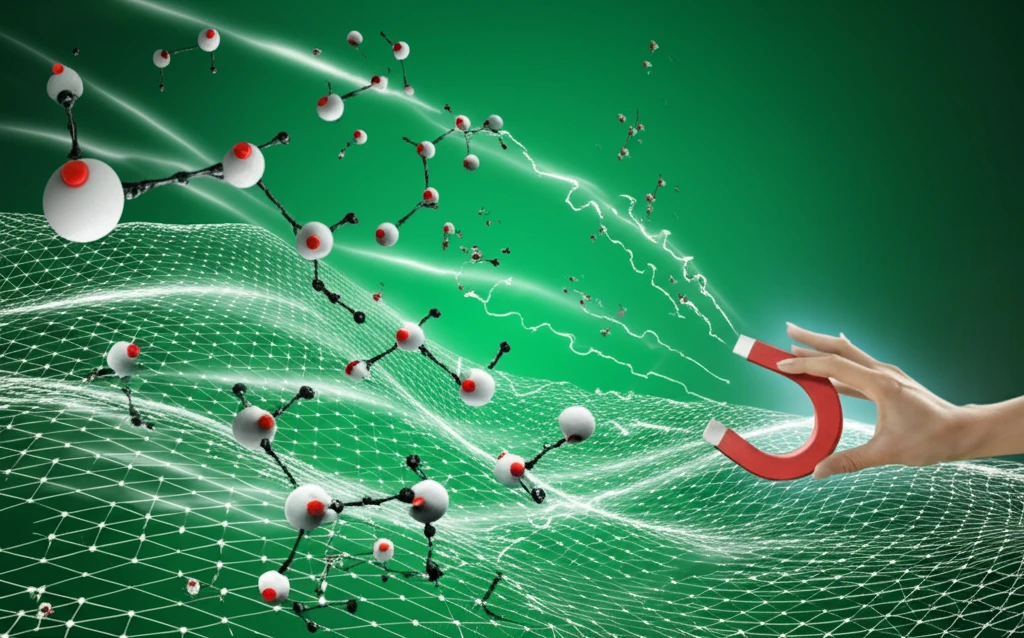
Unlock Green Chemistry: How Magnetic Ionic Liquids are Revolutionizing Sustainable Synthesis
"Discover the innovative use of magnetic ionic liquids in creating eco-friendly chemical processes, offering a sustainable alternative to traditional methods."
In an era where sustainability is paramount, the field of chemistry is undergoing a significant transformation. Traditional chemical processes, often reliant on harsh solvents and energy-intensive methods, are being reimagined with eco-friendliness in mind. Central to this green revolution is the development and application of innovative catalysts and reaction media.
One such groundbreaking advancement is the use of magnetic ionic liquids (MILs). These unique compounds combine the advantages of ionic liquids—such as negligible vapor pressure and high thermal stability—with the manipulability offered by magnetic fields. This combination opens up new avenues for designing cleaner, more efficient chemical reactions.
The research paper "One-pot Green and Efficient Synthesis of Xanthenedione Derivatives using [C₁ (mim) 2] (FeCl₄)2 as a Magnetic Room Temperature Dicationic Ionic Liquid" delves into the practical application of a specific MIL, demonstrating its effectiveness as a recyclable catalyst in the synthesis of xanthenedione derivatives. These compounds are valuable in various applications, highlighting the potential of MILs to drive sustainable chemistry forward.
What are Magnetic Ionic Liquids and Why are They a Game Changer?

Magnetic ionic liquids (MILs) represent a fascinating intersection of materials science and green chemistry. Ionic liquids, in general, are salts that are liquid at relatively low temperatures (typically below 100 °C). Unlike traditional organic solvents, they possess several attractive properties:
- Easy Separation and Recycling: Catalysts can be easily recovered from reaction mixtures using a magnet, reducing waste and making processes more sustainable.
- Enhanced Reaction Rates: Magnetic fields can influence reaction kinetics, potentially speeding up reactions and improving yields.
- Reduced Environmental Impact: By replacing volatile organic solvents with MILs, the emission of harmful vapors is minimized.
- Tunable Properties: The properties of MILs can be tailored by modifying the ionic liquid structure or the type of magnetic component used.
The Future is Green: Embracing Sustainable Chemistry with MILs
Magnetic ionic liquids are not just a passing trend; they represent a fundamental shift towards greener and more sustainable chemical practices. As research continues to uncover new applications and refine existing methods, MILs are poised to play an increasingly important role in various industries, from pharmaceuticals to materials science. By embracing these innovative technologies, we can pave the way for a future where chemical processes are both efficient and environmentally responsible.
